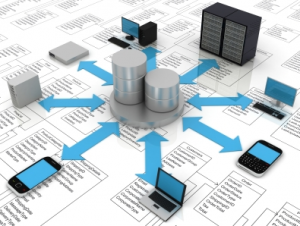Top 5 Unit Testing Best Practices

The article lists down top 5 unit testing best practices that one could adopt to be able to write great unit tests with greater code coverage. Test-Along, if not Test-Driven Many a times, rookies have been found to start writing unit tests once they have written most of the code, e.g., towards the end of the coding. However, to make the most of unit tests, one should write them as they write the code. This is somewhat different and less difficult than writing tests first and code later as in test-driven development (TDD). Following are some of the advantages of doing “test-along” development: One could achieve greater code coverage by …
Junit & Mock Framework Mockito Code Samples – Part 1

The article represents code samples for Junit tests and Mockito, a mocking framework. In addition, it describes different aspects of unit testing and mocking. Software Requirement The goal is to create a simple piece of software which caters to the requirement of school admission where in applicants submit their admission application. Class Design & JUnit Tests To meet above requirement, following different component is designed: Core Components (Key Ones) AdmissionApplication.java: Consists of method recordNewApplication which validates the submitted application, and later, stores in the database after successful validation. ApplicationValidation.java: Consists of methods for validating business rules associated with admission such as mandatory inputs (first name, last name, class, gender, …
JUnit Tests Code Samples for Testing Exception Scenarios

The article presents an example of unit tests which tests both happy path and exception scenario. Business Requirement User trying to open an account must be validated against the business rules related with users’ registration. Following are different business rules: User must provide a valid email address User must provide his first name User’s age must be 18 and above Class Design To demonstrate the unit tests with happy and exception scenarios, following classes have been shown below: SignupValidation: Consists of code validating business rules SignupException: Custom exception representing Signup business rules failure EmailValidator (Get the code from this page). SignupValidationTests: Unit tests for testing signup validation code Class …
Unit Tests – An Alternate Functional Requirements Documentation

The article presents a perspective on how unit tests could be written in a way that they could be used as an alternate form of documentation for understanding functional requirements. Many a times, it has been found that developers, primarily rookies, did not have a clarity on how to name unit tests. Thus, many of them have been found to name the unit tests such as testXXX where XXX is name of the method which they wanted to tests. There has been many recommendations on how to name unit tests, some of which are following: Given…When…Then… Check the page by Martin Fowler (http://martinfowler.com/bliki/GivenWhenThen.html) WhenXXX_ExpectYYY Names representing different use case scenarios …
Mobile Testing Tools & Methodologies used @ Expedia

The article lists down tools & methodologies used for testing Expedia mobile apps (both mobile web & native). Test-driven Development (TDD) TestNG: TestNG is a unit testing framework similar to JUnit. Apart from unit tests, TestNG can also be used to cover other categories of tests such as functional, end-to-end, integration etc. EasyMock: It is, primarily, used for mocking and custom solution for stubbing. As a mocking framework, EasyMock provides mock objects for interfaces by generating them on the fly using Java’s proxy mechanism. Automated Acceptance Testing Frank (iOS): Frank, primarily, allows you to write and execute automated acceptance tests (using Cucumber) against your iOS application to verify its functionality. Simply …
Tea-Time Java Quiz #1
Content Framework for Lunch & Learn Sessions on IT Applications

The article represents a framework using which one could plan their content for taking an introductory session on their applications. The primary objective of such presentation is to provide the audience with following information: Business overview Applications overview The proposed framework aims to satisfy the education needs for different stakeholders including delivery manager, project manager, development & testing teams. Presenters talked differently In my recent experience, I attended a series of sessions taken by leads of different project teams working for the same customer. Except for few of them, most of these sessions were not very interesting and audience enjoyed lunches more than the sessions. Following are some of the …
APIs Performance Testing with Twitter Iago

The article talks about performance testing tool, Iago, which is created at Twitter for testing their core database interfaces, storage sub-systems and domain logic, up to the systems accepting front end web requests. Performance requirement of Twitter platform? Simply speaking, end users expect to read & post tweets with a very fast response time and, Twitter is expected to respond in that manner irrespective of load arriving at it with absolutely no room for any slowness, whatsoever. That is a tough one, isn’t it? This is unlike many enterprise business systems where users can be a little forgiving by waiting for the response to show up. So, they needed to …
Mobile Apps Testing Frameworks Used at LinkedIn

The article lists down tools & frameworks that are used for mobile app testing at LinkedIn. Vows: Vows is a behavior driven development framework for Node.js. It is used to do asynchronous testing with Node.js. The primary feature of the framework is its support for asynchronous testing with Node and, the ability to run concurrent tests. Vows also supports code coverage reporting. Robotium: Robotium is an Android test automation framework that has full support for native and hybrid applications. It supports black-box UI tests for android applications. It is used to test native LinkedIn android app. Selenium: Selenium is used to automate end-to-end testing with mobile web browsers. FoneMonkey: FoneMonkey …
Lessons from Google on Distributed Storage System

The article lists down the lessons learnt by Google Engg. team while they implemented Google BigTable, a distributed storage system, which is used to manage structured data of more than 60 Google products or so. Read further about Google BigTable on this page. KISS Principle for Simpler Design & Coding With distributed systems bound to be complex and the related codebase expected to evolve over a period of time, it may be good idea to keep the design and coding simple for ease of code maintenance and debugging. One could apply the KISS principle by breaking down the problem into smaller pieces and do the design and coding appropriately. Read …
How to Measure Software Development Productivity

The article lists down pages/papers on measuring software development productivity. The Theory of Constraints: A good read on measuring software development productivity Measuring Productivity of Software Development Teams: The paper lists down different techniques/models for measuring software development productivity. CannotMeasureProductivity: Then, there is this article by Martin Fowler which says that it is difficult to measure software development productivity. He points about ineffectiveness of following approaches of measuring developer’s productivity: Lines of codes (LOC) Function points The software development teams working based on Waterfall model or Agile methodologies model tend to measure the developer’s productivity in terms of following variants: Function Points Story Points (size) vs Velocity Following pages present …
List of Javascript Templating Engines & Why One Needs Them?

The article presents a short overview on why one needs Javascript templating engines and, a list of these frameworks. Please feel free to suggest one or more frameworks if I missed to include them in the list below. Why do I ever need Javascript templating engine? Consider the following use-case scenario. Let’s say, you are a big enterprise with different line of businesses (LOBs). Each LOB has a set of web applications serving its business needs. With different LOB having different applications, following scenario is likely to happen: One particular LOB, X, has applications written with Java/JSP. Other LOB, Y, has applications written with .NET technology Other LOB, Z, …
Why Facebook Relies on A/B Testing?

This article talks about A/B testing, why companies like Facebook rely on it and what would it take to adopt such testing for your website. What is A/B testing? A/B testing is a strategy in marketing in which two versions, A and B, (the control and the treatment) are tested against each other. A/B testing, as the names implies, is a simple randomized experiment with two variants/versions, A and B, one of which version A might be currently used version (control) and, version B (treatment) is modified in some respect to study/test the users’ behavior. These tests are also called as split tests. These tests involve modification some of the following …
Lessons from Evernote Usage of Apache Thrift Framework

This article throws light on underlying technology used by Evernote to meet the primary requirement of having client applications on different OS platforms connect to server application for accessing/updating the notes. What is Evernote? As per Wikipedia…Evernote is a suite of software and services designed for notetaking and archiving. A “note” can be a piece of formatted text, a full webpage or webpage excerpt, a photograph, a voice memo, or a handwritten “ink” note…. Evernote supports a number of operating system platforms (including OS X, iOS, Chrome OS, Android, Microsoft Windows, Windows Phone, BlackBerry, and webOS) and also offers online synchronisation and backup services. The diagram below illustrates …
Why Amazon.com Pages Rely on DNS Pre-fetch

The article presents a perspective on why Amazon.com pages rely on DNS pre-fetch and what other e-commerce websites could learn from this. Whats Happening Under the Hood? As you do the view source of the homepage, amazon.com, you would find following Javascript code snippet, right at the top of the page: <meta http-equiv=”x-dns-prefetch-control” content=”on”> <link rel=”dns-prefetch” href=”http://g-ecx.images-amazon.com”> <link rel=”dns-prefetch” href=”http://z-ecx.images-amazon.com”> <link rel=”dns-prefetch” href=”http://ecx.images-amazon.com”> <link rel=”dns-prefetch” href=”http://completion.amazon.com”> <link rel=”dns-prefetch” href=”http://fls-na.amazon.com”> Later, in the same page as well as other pages, you would find several resources such as images, Javascript, CSS files accessed from one of the above as base URLs. So, let’s try and explore some of the …
Learning Coding Tips from Martin Fowler is OK!

This article is first in the series of “Developers Hall of Fame” pages that we have recently started, and talks about some of the works of Martin Fowler, the Software Engineer, from whom I personally learnt a great deal and also recommend others, primarily rookies, from time-to-time. In his about me page, he introduces himself to be “an author, speaker… essentially a loud-mouthed pundit on the topic of software development“. Note that this page shall be updated at regular intervals with Martin’s work that would benefit developers at large in software design and development. Before I go ahead and include some of his pages which could be of great benefits …

I found it very helpful. However the differences are not too understandable for me